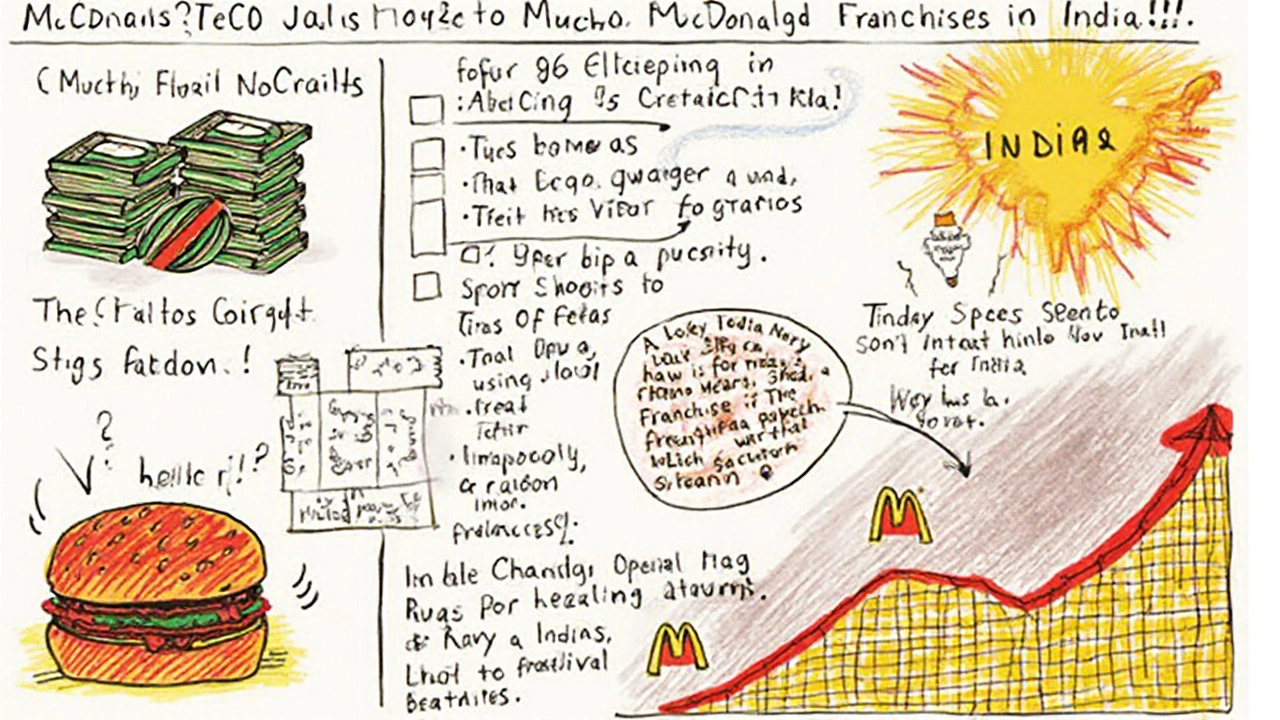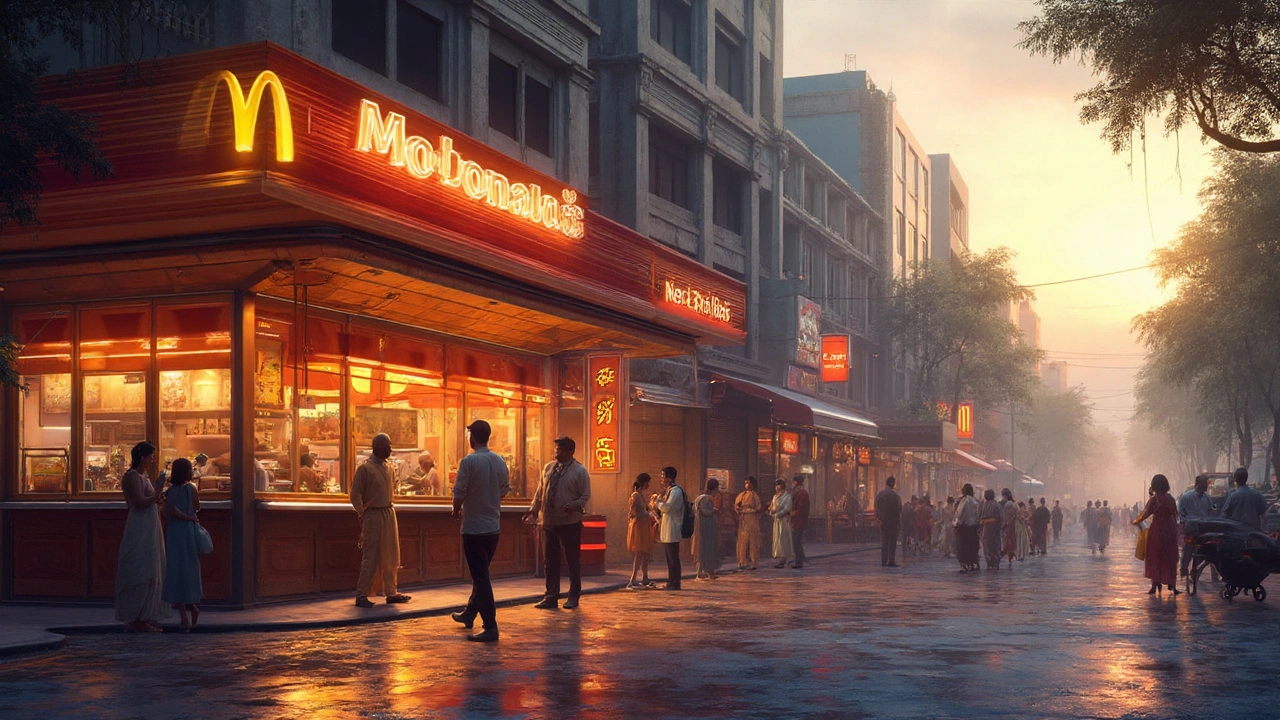If you’ve ever thought about flipping burgers for big bucks, McDonald’s probably sits at the top of your franchise wishlist. Everyone knows the golden arches, but not everyone knows what it takes to actually own one. The cash outlay might surprise you, and the process is not as simple as tossing fries into oil. Even with its universal name and built-in customer flow, joining the McDonald’s club has always been more Everest than bunny slope. But for those who make it, the payoff can be huge. Here’s how the money side of getting a McDonald’s franchise really works in 2025.
How Much Does It Cost to Own a McDonald’s Franchise in 2025?
Let’s cut straight to the numbers, because that’s what everyone wants to know. Getting your hands on a McDonald’s franchise isn’t cheap, and the sticker shock can make even enthusiastic entrepreneurs take a step back. As of August 2025, the minimum liquid cash required to apply is $500,000. That’s cash—not assets, not loans. If you don’t have half a million dollars ready to go, McDonald’s won’t even consider your application. And that’s just the start.
The total investment to open a brand-new McDonald’s restaurant ranges between $1,500,000 and $2,700,000 in 2025, depending on location, building size, city regulations, and real estate costs. This covers everything from land acquisition to construction, decor, kitchen equipment, signs—the works. If you buy an existing McDonald’s, the cost might be lower, but you’re often looking at a similar range.
There’s also the initial franchise fee, which is $45,000. This fee is non-refundable, and it’s due upfront after you clear the approval process. But don’t think you can borrow your way through: McDonald’s expects you to put up at least 40% of the initial investment in non-borrowed, personal cash for new locations or 25% for existing restaurants. Loans can cover the rest, but only if your credit is rock solid.
You’ll also need to factor in working capital, inventory, and opening support, which typically adds another $100,000 to $150,000 to your bank account requirements. Here’s how the numbers break down in 2025:
| Expense | Low Estimate (USD) | High Estimate (USD) |
|---|---|---|
| Franchise Fee | $45,000 | $45,000 |
| Minimum Liquid Cash Required | $500,000 | $500,000+ |
| Total Initial Investment | $1,500,000 | $2,700,000 |
| Working Capital | $100,000 | $150,000 |
Surprised by how high the numbers are? It’s a serious chunk of change, and that’s by design. McDonald’s wants owners who are financially stable and ready to take on risk. It’s part status, part insurance. Owning a McDonald’s is not the same as opening a mom-and-pop burger shack—it’s on a different playing field.
Ongoing Fees: What You Pay After You Open
Paying the hefty upfront money is just the beginning. To keep running your McDonald’s franchise, you’ll face ongoing fees every single month. First up: service fees, or what you might call royalty fees. As of this year, McDonald’s charges 4% of your monthly gross sales as the service fee. That’s a pretty standard rate if you compare it to other big franchise brands; Subway sits at 8%, while KFC hovers around 5%.
Next comes rent (or occupancy), which is a bit more complicated. Most McDonald’s franchisees don’t own the land. Instead, McDonald’s does, and they lease it out to the franchise owner. The rent is usually a base amount plus a percentage of sales, typically running from 8.5% to 15%. This amount depends a lot on your store’s sales and your agreement, but it’s one of the main drivers of your recurring monthly expenses.
Don’t forget marketing. McDonald’s requires each franchise to contribute at least 4% of gross sales to its national marketing fund, which pays for advertising, promotions, and all those TV commercials showing close-ups of sizzling Big Macs. Some franchises also chip in for regional marketing pushes, which can add another 1%–2% on top. When you add it up, your ongoing fees to the company can eat up 12–20% of your monthly gross sales before your own costs (like staff wages, supplies, and utilities) even come into play.
There are also indirect but real costs—upgrades to kitchen equipment, renovations every decade or so, and new technology rollouts. McDonald’s is known for demanding franchisees stay current, and sometimes these upgrades run into six figures. A new digital drive-thru board in 2023 cost franchise owners an average of $80,000 per store. That’s how fast the business moves, and how ready you need to be to keep up.

How Much Does a McDonald’s Franchise Make?
Let’s talk about the fun part: profit. How much does a typical McDonald’s franchise owner actually make? McDonald’s doesn’t publish franchisee income, but there’s plenty of industry data, and it all points in the same ballpark.
On average, a U.S. McDonald’s store pulls in about $3,200,000 in annual gross sales as of mid-2025, up a bit after their all-day breakfast relaunch. But gross sales don’t equal your paycheck. Factor in the royalties, rent, labor, food costs, taxes—what you actually pocket is somewhere in the $150,000–$260,000 range per year, depending on the region and how tightly you run your business. Some stores do better, especially if they’re in high-traffic areas, airports, or big-city centers, but most fall into this income window.
Compare this to the costs, and the return is still pretty good by franchise world standards. To many people, netting $200k+ after expenses from one store is impressive. But there’s a catch: the hours are long, and the risk is high if your location underperforms. Some franchisees run multiple stores and earn well over a million bucks a year by scaling up, but getting beyond one or two units isn’t easy, and McDonald’s is picky about allowing multi-unit ownership.
Here’s a quick comparison table based on 2025 industry data:
| Metric | Low Estimate | High Estimate |
|---|---|---|
| Gross Annual Sales | $2,700,000 | $3,700,000 |
| Net Profit per Year | $150,000 | $260,000 |
There are always outliers. Some franchisees make less, especially those in struggling locations. But if you run things well and keep up with McDonald’s demands, a well-located McDonald's franchise is one of the safer bets in the fast-food world.
McDonald’s Franchise Requirements and Application Steps
Cash is key, but there’s more. Even with a fat bank account, not everyone gets the green light. McDonald’s is picky for good reason. They want owners who represent the brand, work hard, and actually show up—no silent partners or absentee landlords allowed.
The first thing they check is your liquid assets and net worth. If you pass the cash test, you’ll go through a long selection process. There’s an application, interviews, and background checks. You’ll need a solid credit history—meaning no recent bankruptcies, plenty of savings, and a clean record. McDonald’s also prefers people with experience in business management or retail, although they make exceptions for truly outstanding candidates.
Once you pass the early rounds, McDonald’s sends you through a nine- to twelve-month training program. This covers everything: managing staff, ordering supplies, customer complaints, even how to tell when fries are perfectly done. The program is intense—running real stores and shadowing experienced owners. You can’t skip this. Only after passing all training modules and getting the stamp of approval are you paired with a location.
Buying a McDonald’s restaurant can work two ways: you take over an existing place (usually from a retiring franchisee) or you build from scratch. McDonald’s tends to favor people who buy existing stores, because they’re less risky. Starting new stores is mainly about market expansion or replacing closed restaurants.
Here’s how the application process usually works in 2025:
- Check your cash: $500,000 liquid and able to invest at least 40% yourself.
- Apply online at the McDonald’s franchise site.
- Pass background and credit checks.
- Interview and assessment rounds—McDonald’s is big on personality fit.
- Complete the multi-month Operations Training Program.
- Get matched to a franchise opportunity—either new or resale.
- Sign the franchise agreement, pay your fees, and prepare capital.
- Begin store renovations, training staff, ordering equipment, and prepping for opening.
Be ready for frequent pop-ins, check-ups, and mandatory meetings. McDonald’s expects franchisees to be hands-on, and if you’re looking for a passive business, this isn’t it. You also need to stay on top of grooming standards, quality checks, tech upgrades, and compliance. They’re strict, but that’s why customers always get the same fries wherever they go.

Tips for Making Your McDonald’s Franchise a Success
If you’re still excited, you might be the type who’ll actually make it. Here’s the deal: just buying in doesn’t guarantee profit. The fast-food world moves fast, and McDonald’s keeps pushing store owners hard to come up with results. To be successful, you’ll want to keep these tips in mind as you start:
- Location is everything: Some franchises in major highways and malls pull in twice the average sales.
- Get to know your local market: Demographics matter. A breakfast-heavy crowd vs. a late-night college hangout can change your menu focus and staffing.
- Build and keep a great team: Employee churn kills profit. Invest in training and treat your best crew like gold.
- Stay tight with inventory: Wasted food eats margin. Use analytics to predict demand and manage your orders smartly.
- Embrace the tech: McDonald’s invests big in kiosks, apps, and digital drive-thrus. Adapt fast to new tech or fall behind.
- Get involved in marketing: Don’t just trust corporate ads. Build local buzz with events, sponsorships, or creative promos.
- Control costs: Run a spreadsheet like your life depends on it, because it kind of does.
- Stay active on the floor: The most profitable franchisees know regulars by name and spot problems before they grow.
Don’t overlook the fact that foodservice is all about volume. The more customers, the more money in your pocket. But quality and speed matter, because a slow store with long lines kills repeat business. Always keep your eye on the basics: clean lobby, fresh food, and fast, friendly service, every shift, every day.
A lot of new franchise owners only see the dollar signs and ignore the grind. If you’re willing to hustle, stay up-to-date, and put in long hours, a McDonald’s franchise can be a true ticket to generational wealth. The brand does most of the heavy lifting, and you get a business that’s stood the test of time. But only if you can pony up the cash, adapt, and outwork the competition. For the right person, that’s what makes those Golden Arches shine even brighter.

